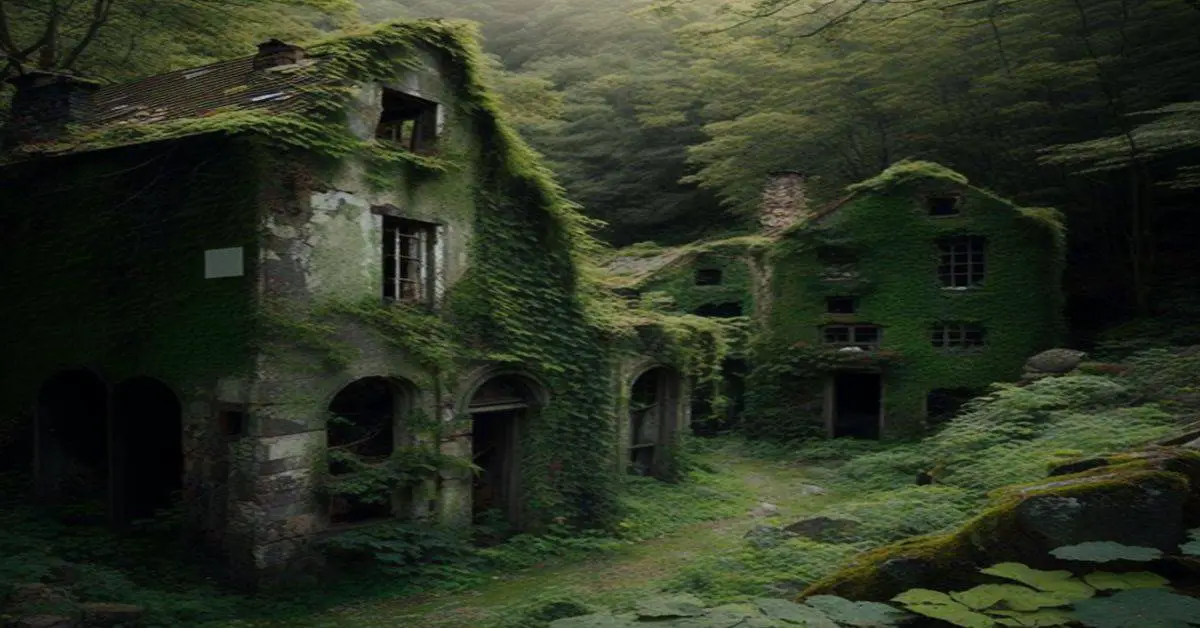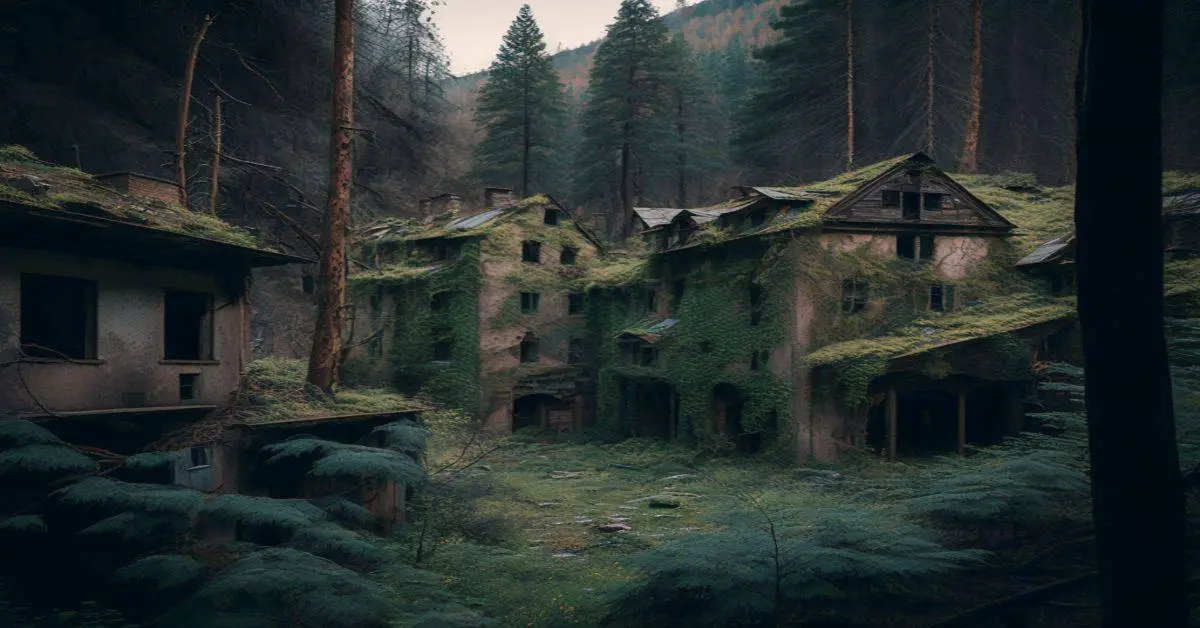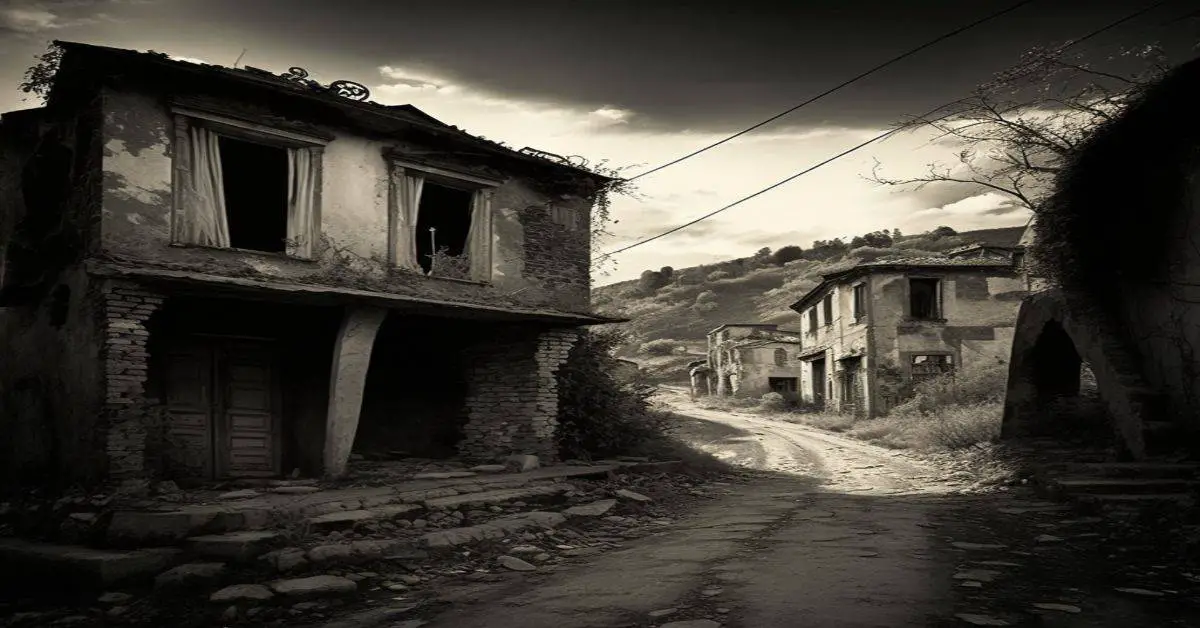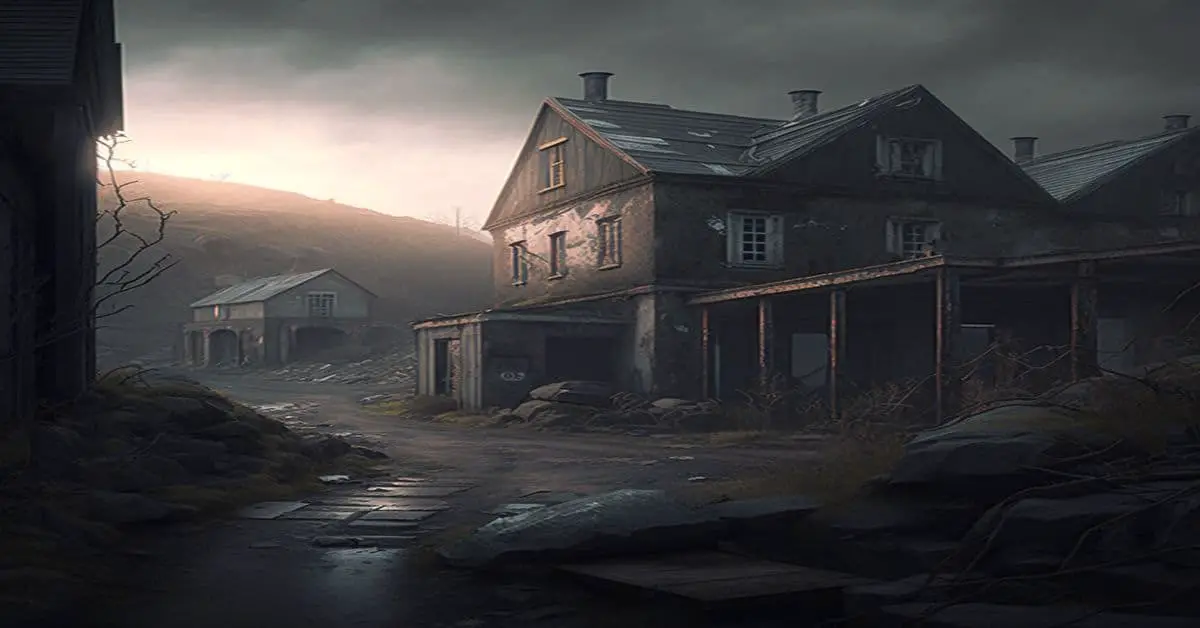Ghost towns are fascinating remnants of the past, often holding haunting tales of tragedy, abandonment, or the decline of once-thriving industries. These deserted settlements can be found across the globe and offer a unique insight into the history and culture of the people who once inhabited them.
In this article, we will explore some of the most intriguing ghost towns worldwide, delving deep into their eerie pasts and uncovering the reasons behind their abandonment.
Craco, Italy
Craco, a hillside city in Italy, was abandoned after a series of natural disasters. Founded in the 8th Century, Craco faced a landslide in 1963 and a flood in 1972, worsening the conditions. 1980 an earthquake devastated the city, forcing the remaining inhabitants to leave.
Despite the dangers, Craco is still visited by tourists today and has even served as a filming location for movies such as ‘The Passion of the Christ.’
Tragic History
Craco’s tragic history began in the 8th Century when it was discovered and built upon. Over the years, the city experienced a series of natural disasters, including landslides and floods, which made living conditions unbearable for its inhabitants.
The final straw came in the form of an earthquake in 1980, which led to the city being abandoned entirely.
Modern-Day Craco
Although Craco is considered a ticking time bomb due to its precarious location and the ever-present threat of natural disasters, it continues to attract tourists. The city serves as a haunting reminder of the past and has even been used as a filming location for various movies.
Hashima Island, Japan
Once a thriving mining town, Hashima Island was home to mine workers and their families who worked at the undersea coal mines. Established in 1887, the city had a high population in 1959. However, as coal reserves dwindled, people began to leave the island.
In 2009 the government restored some of the buildings, and Hashima Island was opened to tourists. 2015 the island was granted ‘UNESCO World Heritage Historical Site’ status.
Rise and Fall of Hashima Island
Hashima Island’s prosperity came from its rich coal mines, attracting workers and their families. However, as coal reserves began to run out, people started to leave the island in search of better opportunities. Eventually, the island was abandoned, with its once-thriving city left to decay.
Hashima Island Today
Today, Hashima Island stands as a testament to its prosperous past, with its restored buildings and status as a UNESCO World Heritage Historical Site. The island has become a popular tourist destination, drawing visitors who are intrigued by its haunting history and eerie atmosphere.
Pripyat, Ukraine
Pripyat, located in Ukraine, is the most famous ghost town in the world. Established in 1970, the city was home to around 50,000 people before it was evacuated in April 1986 due to the explosion at the nearby Chernobyl Nuclear Station.
The extremely high levels of radiation forced the citizens to leave immediately. The area is safe to visit today as radiation levels have dropped, attracting photographers and thrill-seekers to this creepy town.
The Chernobyl Disaster
The Chernobyl disaster was a catastrophic nuclear accident that occurred on April 26, 1986, at the No. 4 reactor in the Chernobyl Nuclear Power Plant, near the city of Pripyat. The explosion released large amounts of radioactive particles into the atmosphere, which spread over much of Western USSR and Europe.
The Abandonment of Pripyat
Following the disaster, the entire city of Pripyat was evacuated due to the extremely high radiation levels. The city has been left as a ghost town since then, with its crumbling buildings and abandoned streets serving as a haunting reminder of the tragedy.
Kolmanskop, Namibia
Kolmanskop, a town in the Namib desert, was once a bustling hub for German miners during the early 20th century. The town’s prosperity came from the rich diamond deposits found in the area, attracting people from all over the world.
However, after World War I, the town’s population declined as other diamond-rich areas were discovered, and the town was eventually abandoned in the 1950s. Today, the town’s slowly sinking infrastructure and the encroaching desert sands make it an eerie and fascinating tourist attraction.
The Diamond Rush
The discovery of diamonds in the area led to a massive influx of German miners in the early 20th century. Kolmanskop quickly grew into a thriving town with schools, hospitals, and luxurious Deutsche architecture.
The Decline and Abandonment of Kolmanskop
As World War I wreaked havoc around the world, the population of Kolmanskop began to decline. With the discovery of other diamond-rich areas, people started to leave the town in search of better opportunities.
By the 1950s, the once-prosperous town had been abandoned, and it now stands as a hauntingly beautiful ghost town, slowly being reclaimed by the desert sands.
Virginia City, Montana, US
Virginia City, a gold mining town in Montana, US, was established in 1863 and was once home to over 10,000 residents. The town’s well-preserved buildings, stores, and houses draw tourists who are interested in experiencing life in the Wild West. Visitors can even attend vaudeville theatre performances in an Opera house.
The Gold Rush
The discovery of gold in the area led to the establishment of Virginia City, which quickly grew into a bustling town with over 10,000 residents.
Virginia City Today
Today, Virginia City stands as a testament to the Wild West era, with its well-preserved buildings, stores, and houses attracting tourists worldwide. The town offers a unique glimpse into the past, allowing visitors to experience life during the gold rush era.
North Brother Island, New York
Located near one of the most famous cities in the world, North Brother Island holds a dark secret. The Riverside Hospital, constructed on the 20-acre island in the late 1800s, was used as a quarantine facility to treat patients with smallpox and other infectious diseases.
In 1905, over a thousand people died when a steamship caught fire near the island. The hospital was reopened after World War II to treat war veterans and drug addicts, but was shut down for good in 1963. Since then, the island has been abandoned and is now home to many mysteries.
The Riverside Hospital
The Riverside Hospital was a quarantine facility built on North Brother Island in the late 1800s to treat patients with smallpox and other infectious diseases. The hospital also treated people suffering from typhus, tuberculosis, and yellow fever.
The Abandonment of North Brother Island
North Brother Island was abandoned after the hospital was shut down in 1963. The island is now home to many mysteries and has become a popular destination for urban explorers and photographers.
Oradour-Sur-Glane, France
The village of Oradour-Sur-Glane in France is a stark reminder of the horrors of World War II. On June 10, 1944, the town’s population was massacred by the Waffen SS, a military branch of the Nazi Party’s SS organization. Men were shot and killed in barns, while women and children were murdered when the church they were locked in was blown up. Survivors were gunned down as they fled.
After the war, French wartime leader Charles De Gaulle decided that Oradour-Sur-Glane should be left as a testament to Nazi cruelty. Today, the deserted town serves as a memorial to those who lost their lives during the massacre.
The Massacre of Oradour-Sur-Glane
On June 10, 1944, the Waffen SS committed a horrific atrocity in the village of Oradour-Sur-Glane. Over 600 men, women, and children were killed during the massacre, with only a few survivors managing to escape.
Oradour-Sur-Glane Today
Today, Oradour-Sur-Glane stands as a haunting reminder of the cruelty of the Nazi regime. The town’s ruins have been preserved as a memorial to the victims of the massacre, serving as a powerful testament to the horrors of World War II.
Wittenoom, Western Australia
Wittenoom, once a thriving mining town in Western Australia, was home to an abundance of blue asbestos, believed to be the most hazardous of the six types of asbestos. However, after mining was stopped in 1966 due to losses and growing health concerns, the town was abandoned.
2007 the town was erased from the Australian maps as the connecting roads were blocked. Despite its hazardous past, many travelers still visit this place every year.
The Asbestos Boom
Wittenoom experienced its heyday during the 1950s and 1960s, when the town’s rich blue asbestos deposits attracted miners and their families. The town was home to a prosperous mining industry, but its hazardous nature would ultimately lead to its downfall.
The Abandonment of Wittenoom
After mining was stopped in 1966 due to losses and growing health concerns, the town of Wittenoom was abandoned. The town was erased from the Australian maps in 2007, but its hazardous past continues to draw travelers to this eerie ghost town.
Kayakoy, Turkey
Kayakoy, a village built on a hillside in southwestern Turkey, is full of ruins of the Greek-style buildings constructed in the 18th century to accommodate the Greeks. The village once housed around 6,500 Greeks, but along with Christian minorities, they were killed during World War I.
Later, when Greece lost the Greco-Turkish War and the Treaty of Lausanne was signed in 1923, the Greek orthodox were forced to move out of the Turkish territory, leaving Kayakoy as a ghostly town. Today, the inhabited town serves as a museum village.
The Greek Settlement
Kayakoy was established as a settlement for the Greeks in the 18th century, with the village built on a hillside to accommodate the growing population. The village thrived for many years, with its Greek-style buildings and bustling community.
The Abandonment of Kayakoy
During World War I, the Greeks and Christian minorities living in Kayakoy were killed, and the village was left abandoned. After the war, the Treaty of Lausanne forced the Greek orthodox to move out of the Turkish territory, leaving Kayakoy as a ghostly town. Now, the village serves as a museum and a testament to its turbulent past.
Ross Island, India
Ross Island, located in the Indian Ocean, housed settlements in the late 18th century but had to be abandoned due to extreme climatic conditions. Around 60 years later, the island was used as an administrative headquarters and penal settlement by the Britishers until an earthquake rocked it in 1941.
Today, the deserted town is filled with ruins, serving as a testament to its past.
Early History of Ross Island
The history of Ross Island dates back to the late 18th century when it was discovered and used as a settlement. However, the island had to be abandoned due to the extreme climatic conditions and harsh environment.
British Rule and Abandonment
In the 19th century, Ross Island was used by the British as an administrative headquarters and penal settlement. The island thrived for many years, with its population growing and infrastructure developing. However, an earthquake in 1941 led to the island’s abandonment again, leaving behind a deserted town filled with ruins.
As we’ve explored, countless ghost towns are scattered worldwide, each with its unique and often tragic history. From the haunting remains of Craco, Italy, to the eerie desolation of Pripyat, Ukraine, these abandoned settlements serve as a testament to the changing fortunes of the human experience.
So, the next time you find yourself wandering through one of these ghostly locales, take a moment to appreciate the stories and the people who once called these places home.



